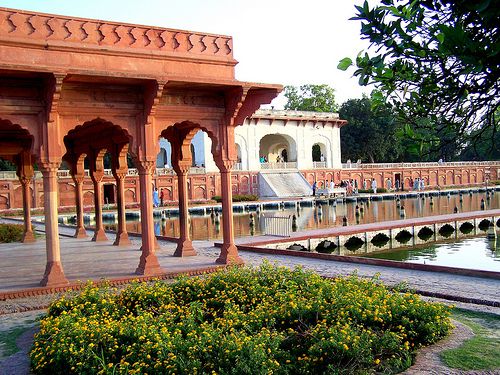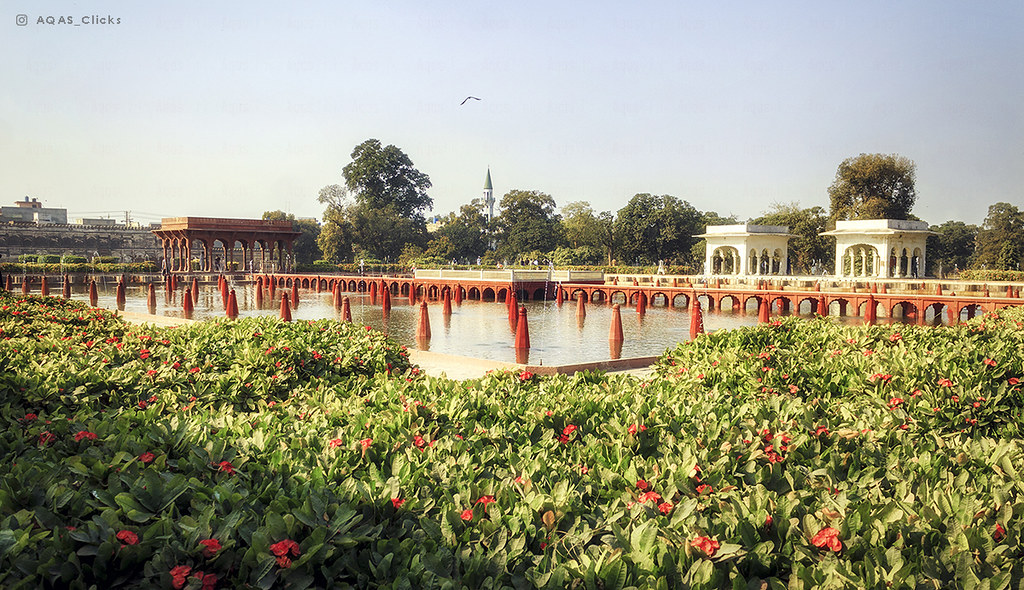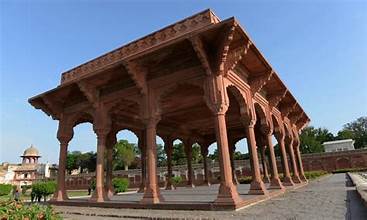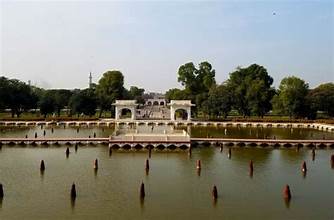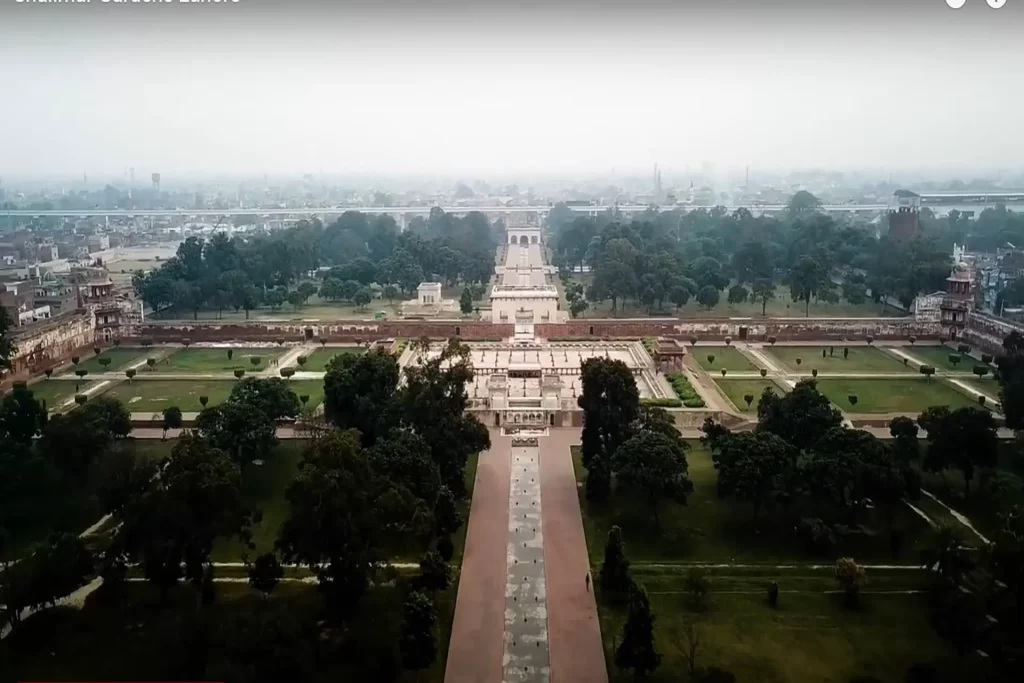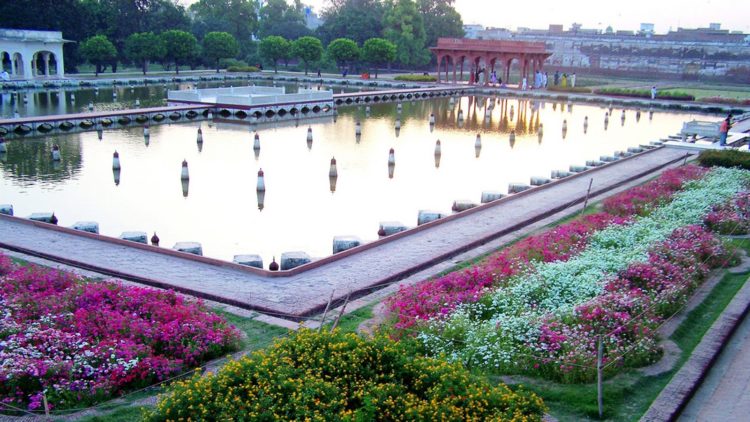Article
Shalimar Gardens
Published
2 years agoon
By
EDITOR
Quick Facts
| Location Coordinates Category Starting Date Completation Date Order to Construct Architecture Style Covered area Status Endangered Site | Lahore,Pakistan 31°35’13.32N 74°22’56.04E Garden 1641 A.D. (1051 A.H.) 1642 A.D. (1052 A.H.) Shah Jahan Persian gardens Style 658m north to south and 258m east to west UNESCO World Heritage Site,From 1981 In 2000 |
The Shalimar Gardens, also spelled Shalamar Gardens, represent a remarkable Persian-style garden, a testament to the garden design traditions. Commissioned and constructed by the Mughal Emperor Shah Jahan in Lahore, Pakistan, these gardens are a testament to the era’s architectural brilliance.
Situated near Baghbanpura along the Grand Trunk Road, approximately 5 kilometers northeast of Lahore’s main city, the Shalimar Gardens draw inspiration from five distinct geographical sources: Central Asia, Kashmir, West Punjab, Persia, and the Delhi Sultanate. Notably, these gardens should not be confused with the Shalimar Gardens in Jammu and Kashmir.
In 1981, the UNESCO World Heritage Site list welcomed the Shalimar Gardens, alongside the Lahore Fort, as part of the UNESCO Convention safeguarding global cultural and natural heritage sites.
Historical Roots:
Originally belonging to the esteemed Zaildar families of the region, particularly renowned as the Mian Family of Baghbanpura, the Shalimar Gardens’ site held significance. The Mian Family received the royal title of ‘Mian’ from the Mughal Emperor, honoring their services to the Empire. Mian Muhammad Yusuf, then the family head, generously donated the Ishaq Pura site to Emperor Shah Jahan after persistent requests from royal engineers, impressed by its favorable location and soil quality. In gratitude, Shah Jahan granted the Mian family governance of the Shalimar Gardens, a custodianship that endured for over 350 years.
Construction and Development:
Initiated in 1641 A.D. (1051 AH) under the auspices of Shah Jahan, the construction of the Shalimar Gardens reached completion within the following year. Supervised by Khalilullah Khan, a notable figure in Shah Jahan’s court, the project’s management involved collaboration with Ali Mardan Khan and Mulla Alaul Maulk Tuni.
Architecture:
The Shalimar Gardens are laid out in the form of an oblong parallelogram, surrounded by a high brick wall, which is famous for its intricate fretwork. This garden was made on the concept of Char Bhagh. The gardens measure 658 meters north to south and 258 meters east to west.
The three level terraces of the Gardens:
The Gardens have been laid out from south to north in three descending terraces, which are elevated by 4–5 metres (13-15 feet) above one another. The three terraces have names in Urdu as follows:
The upper terrace named Farah Baksh meaning Bestower of Pleasure.
The middle terrace named Faiz Baksh meaning Bestower of Goodness.
The lower terrace named Hayat Baksh meaning Bestower of life.
Shah Nahar:
To irrigate the Gardens, a canal named Shah Nahar meaning Royal canal, later also known as Hansti nahar, meaning Laughing canal was brought from Rajpot (Present day Madhpur in India), a distance of over 161 kilometers. The canal intersected the Gardens and discharged into a large marble basin in the middle terrace.
410 Fountains:
From this basin, and from the canal, rise 410 fountains, which discharge into wide marble pools. The surrounding area is rendered cooler by the flowing of the fountains, which is a particular relief for visitors during Lahore’s blistering summers, with temperature sometimes exceeding 120 degrees fahrenheit. The distribution of the fountains is as follows:
The upper level terrace has 105 fountains.
The middle level terrace has 152 fountains.
The lower level terrace has 153 fountains.
All combined, the Gardens therefore have 410 fountains.The Gardens have 5 water cascades including the great marble cascade and Sawan Bhadoon.
Buildings of the Gardens
The buildings of the Gardens include:
Sawan Bhadum pavilions.
Naqar Khana and its buildings.
Khwabgah or Sleeping chambers.
Hammam or Royal bath.
The Aiwan or Grand hall.
Aramgah or Resting place.
Khawabgah of Begum Sahib or Dream place of the emperor’s wife.
Baradaries or summer pavilions to enjoy the coolness created by the Gardens’ fountains.
Diwan-e-Khas-o-Aam or Hall of special & ordinary audience with the emperorTwo gateways and minarets in the corners of the Gardens
Trees of the Gardens:
Some of the varieties of trees that were planted included:
Almond
Apple
Apricot
Cherry
Gokcha
Mango
Mulberry
Peach
Plum
Poplar
Quince Seedless
Sapling of Cypress
Shrubs
Sour & sweet oranges
Design:
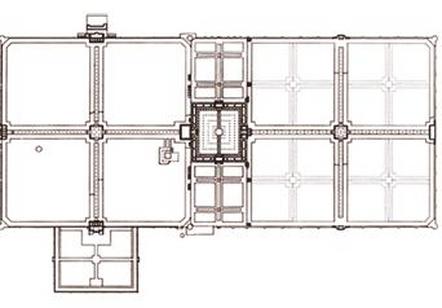
The enclosure is over 457 meters (500 yards) long, and contains 2 gardens, with a narrow rectangular terrace in between them. Each garden is divided by canals and flowerbeds, following the Persian tradition of the charbagh, or fourfold garden. Each of the 3 parts is on a different level, so that the upper parts are concealed from the view of people entering from below. The highest, and therefore the most private, section is thought to have been used by the imperial women. The channels of water that weave through the whole garden are fed by canals designed and administered by a defector from the Persian court, Ali Mardan Khan, or Inayat Khan, known for his architectural and building expertise. The gardens contain white marble buildings in typical Shah Jahani style. They are enclosed by a red sandstone wall interrupted by small decorative kiosks. The Shalimar Gardens are among the best preserved Mughal gardens.
You may like
-


Unity, Faith, and Discipline: The Cornerstones of Pakistan’s Motto as “Aik Qaum” (One Nation)
-


Aik Qaum: The Fusion of Integrity and Patriotism
-


“AIK QAUM” DECLARATION OF CONCEPTION
-


Dr. Abdul Qadeer Khan: The Real Hero of Pakistan
-
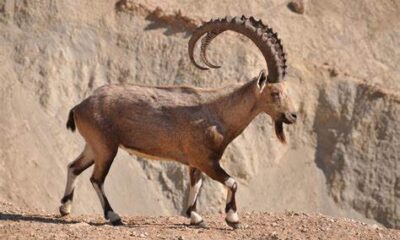

The Chiltan Ibex: A Rare Treasure of Balochistan
-
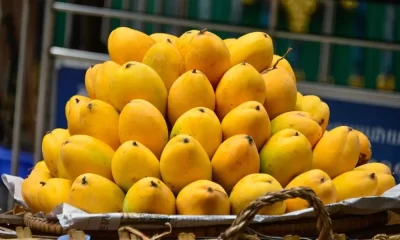

MANGO HEALTH BENEFITS NUTRITION
Article
Aik Qaum: The Fusion of Integrity and Patriotism
Published
3 weeks agoon
May 28, 2025By
EDITOR
We keep Integrity closest to our Heart and Patriotism on top of our mind.
Integrity and patriotism are not separate entities; they are intertwined in the soul of Pakistan. The people understand that to be a patriot is to uphold the principles of integrity. Honesty and love for one’s country are two sides of the same coin. Together, these values form the essence of “Aik Qaum.”
The fusion of integrity and patriotism is evident in the everyday lives of Pakistanis. It’s in the farmer toiling the fields, the teacher educating the youth, and the soldier guarding the borders. It’s in the child who dreams of a better Pakistan and the elderly who have seen the nation grow. “Aik Qaum” is the realization that integrity and patriotism are the heart and mind of Pakistan, beating in unison to guide the nation forward.
As we celebrate the spirit of “Aik Qaum,” we honor the values that make Pakistan a unique and resilient nation. Integrity and patriotism serve as our guiding stars, leading us towards a brighter and more prosperous future. In the heart of every Pakistani and at the forefront of their minds, “Aik Qaum” stands as a testament to the strength of a united nation, bound by the principles of integrity and the unyielding love for their homeland.
In Pakistan, “Aik Qaum” is not just a motto; it’s a way of life that embodies the enduring spirit of a proud and united nation.

Our Initiative
The fabric of the Pakistani nation has something unique in its knit, something signature and so sanguine that could keep on energizing its very fibers irrespective of the floods of considerably tough challenges posed against it since its inception. There is also a belief that Pakistan has been blessed with such a golden glitter that couldn’t be ignored by any sensible system of reason and knowledge among the league of free, upright and kind nations. The credit goes to the amazing people of Pakistan. It is more exciting to find that the people of Pakistan, be it the businessmen, doctors, parents, soldiers, students, teachers, judges, labourers or lawyers etc, have assumed the duty bestowed upon them by the founder of the nation, Quaid-e-Azam Muhammad Ali Jinnah decades ago. Quaid once said “If you will work in cooperation, forgetting the past, burying the hatchet, you are bound to succeed.” At another occasion, Quaid summed this message up in just three words: Unity, Faith and Discipline. AIKQAUM.COM is an initiative built upon the idea of translating this vision of the founder of Pakistan, Quaid-e-Azam Muhammad Ali Jinnah into a fruitful action.
There is no power on earth that could restrict us from finding those beautiful commonalities among the people of this beautiful nation. It contends to promote the psyche morale of the Pakistani nation by addressing the issues instead of dodging them. We have a team of thorough professionals fully equipped to create unique platforms, forums and projects which will bring people closer on all sensitive issues related to our national identity and progress. We also have a strong support network for successful execution of all our campaigns in order to induce greater cohesion and the spirit of coexistence across the length and breadth of Pakistan. Coincidentally, we are living through an age of increased morphing of warfare in a world that’s once again moving from unipolar to a multipolar turf. The social, political, economic and technological factors shaping the evolution of warfare are being constantly experimented and employed in our own region. In a time of increased friction between regional powers and a heightened threat on the eastern border, Pakistan faces multiple challenges posed at its internal, external and economic security.
All these factors, blended with our archrival’s constant image building campaigns, a heavily funded lobbying in the West, the new Indo-US strategic alliance, as well as India’s ambition to start a space race, puts our nation on caution and throws immense burden of responsibility on our shoulders. We are witnessing a rise of sub conventional warfare fought with guns and bombs, but won on keyboards and drawing boards. AIKQAUM.COM aspires to be a strong force of defense against the subversive forces that are trying to malign Pakistan and hurt our interests in the region. We are fully trained and equipped to meet the challenges on the social and digital front.
www.aikqaum.com, info@aikqaum.com
Our Philosophy
VISION:
To create a social awareness about the values which join our nation together while countering anti-Pakistan narratives with logical and practical rationale.
MISSION:
To infuse a sense urgency for cohesion among all ethnic, political and religious schools of thought.
VALUES:
We keep integrity closest to our heart and patriotism on top of our mind. Our work ethics and commitment to our people shall empower us to achieve success in all our pursuits.
Article
The Chiltan Ibex: A Rare Treasure of Balochistan
Published
2 months agoon
April 16, 2025By
EDITOR
The Chiltan ibex (Capra aegagrus chiltanensis), a subspecies of the wild goat, is one of the most unique and endangered animals native to Pakistan. Found exclusively in the rocky highlands of the Chiltan range within the Hazarganji-Chiltan National Park in Balochistan, this elusive animal represents the region’s rich biodiversity and ecological heritage.
Physical Characteristics
The Chiltan ibex is a strikingly beautiful species, with a robust, muscular build perfectly suited for navigating steep and rocky terrains. Males are particularly distinctive, boasting impressive curved horns that can grow up to 30 inches (76 cm) in length. Their coat is light brown, with a darker stripe running along their back and legs, providing excellent camouflage in their arid mountainous habitat.
Females are smaller in size with shorter, more slender horns, and their coloration is less pronounced, blending seamlessly into their surroundings. This camouflage helps protect them and their offspring from predators such as wolves and large birds of prey.
Habitat and Range
The Chiltan ibex inhabits the rugged, semi-arid regions of the Chiltan range, located within the Hazarganji-Chiltan National Park, southwest of Quetta. These high-altitude areas, ranging from 1,500 to 3,200 meters above sea level, are characterized by rocky cliffs, sparse vegetation, and extreme weather conditions.
The ibex is well-adapted to this challenging environment, where it feeds on grasses, shrubs, and the leaves of juniper trees. Its ability to climb steep slopes and jump across narrow ledges gives it a unique advantage in escaping predators and surviving in such inhospitable terrain.
Behavior and Social Structure
Chiltan ibexes are diurnal, meaning they are active during the day. They are typically found in small groups, with herds consisting of females and their young. Males are more solitary, joining herds only during the breeding season, which occurs in the late autumn and winter months.
During this time, males engage in dramatic displays of strength to compete for mating rights, including horn clashing and dominance rituals. After a gestation period of around six months, females give birth to one or two kids in spring, when food availability is higher.
Conservation Status
The Chiltan ibex is classified as endangered due to its restricted range, habitat loss, and poaching. Habitat degradation caused by overgrazing, deforestation, and human encroachment poses significant threats to its survival.
Historically, the ibex faced heavy hunting pressure for its horns, considered a symbol of prestige, and for its meat. Although hunting is now banned in the national park, illegal poaching remains a concern.
Conservation Efforts
To protect the Chiltan ibex and its fragile ecosystem, the Hazarganji-Chiltan National Park was established in 1980. Spanning over 32,500 acres, the park provides a safe haven for the ibex and other wildlife, such as wolves, foxes, and birds of prey.
Conservation efforts include:
- Anti-Poaching Measures: Increased patrolling and strict enforcement of hunting bans have helped reduce poaching incidents.
- Habitat Restoration: Programs to control overgrazing and reforest juniper woodlands are underway to restore the ibex’s natural habitat.
- Public Awareness Campaigns: Local communities are being educated about the importance of biodiversity and the role of the Chiltan ibex in maintaining ecological balance.
- Eco-Tourism Initiatives: Promoting responsible tourism generates revenue for conservation projects and raises awareness about the ibex’s plight.
Ecological Importance
The Chiltan ibex plays a vital role in its ecosystem as both a grazer and prey species. By feeding on shrubs and grasses, it helps maintain vegetation balance, preventing overgrowth and contributing to soil health. At the same time, it serves as a food source for predators, sustaining the natural food chain.
Protecting the ibex is not just about saving a single species—it’s about preserving an entire ecosystem that supports numerous forms of life, from tiny insects to apex predators.
Cultural Significance
For the people of Balochistan, the Chiltan ibex is more than just a wild animal; it is a symbol of the region’s natural beauty and resilience. Local folklore often intertwines with the ibex, celebrating its agility and strength. The species also draws international attention, making it a flagship for wildlife conservation in Pakistan.
The Future of the Chiltan Ibex
While conservation efforts have shown promise, the Chiltan ibex remains vulnerable. Protecting this rare species requires continued collaboration between government agencies, conservation organizations, and local communities.
By safeguarding the Chiltan ibex, we not only preserve a unique animal but also protect the fragile ecosystem of Balochistan, ensuring that future generations can marvel at the beauty and resilience of this incredible species.
The Chiltan ibex is a testament to nature’s ability to adapt and survive in the harshest of environments. As efforts to protect it continue, this majestic animal stands as a beacon of hope for wildlife conservation in Pakistan.

Unity, Faith, and Discipline: The Cornerstones of Pakistan’s Motto as “Aik Qaum” (One Nation)

Aik Qaum: The Fusion of Integrity and Patriotism


